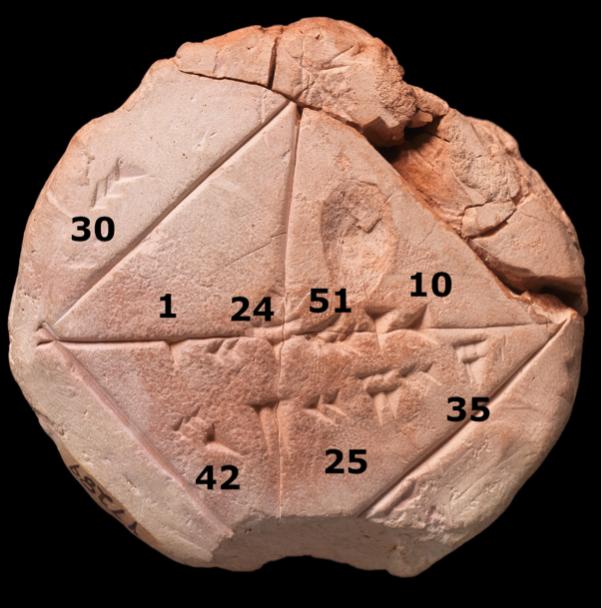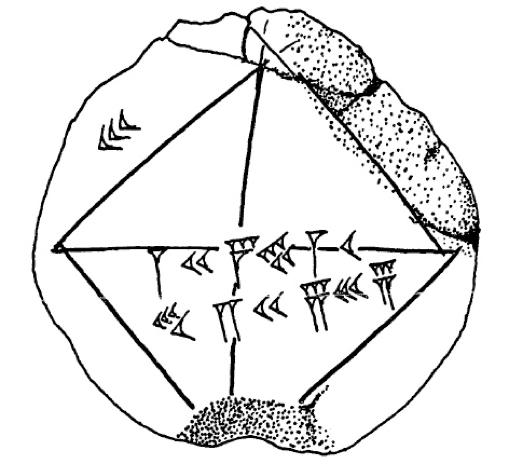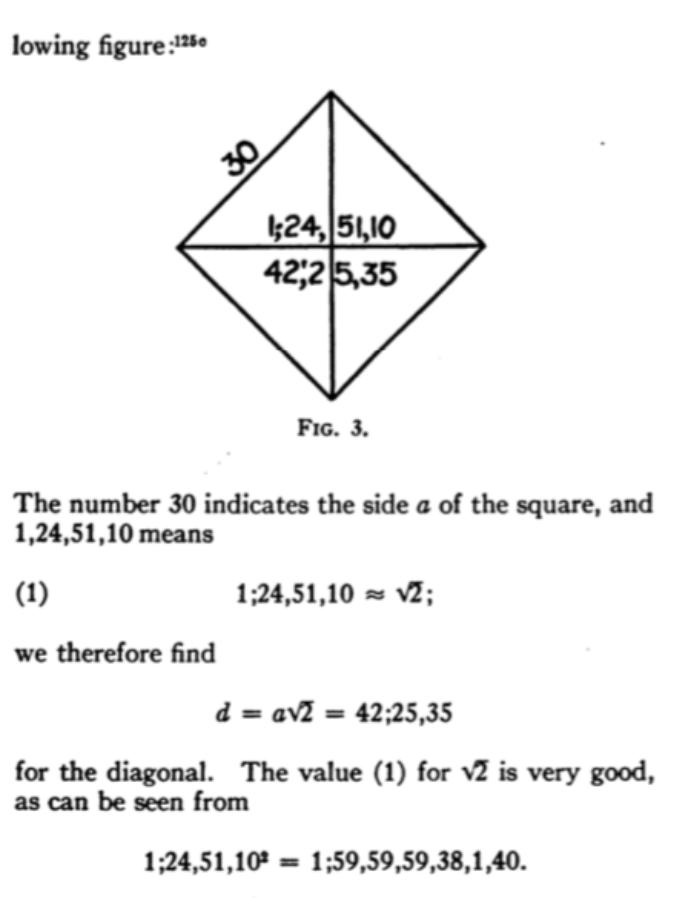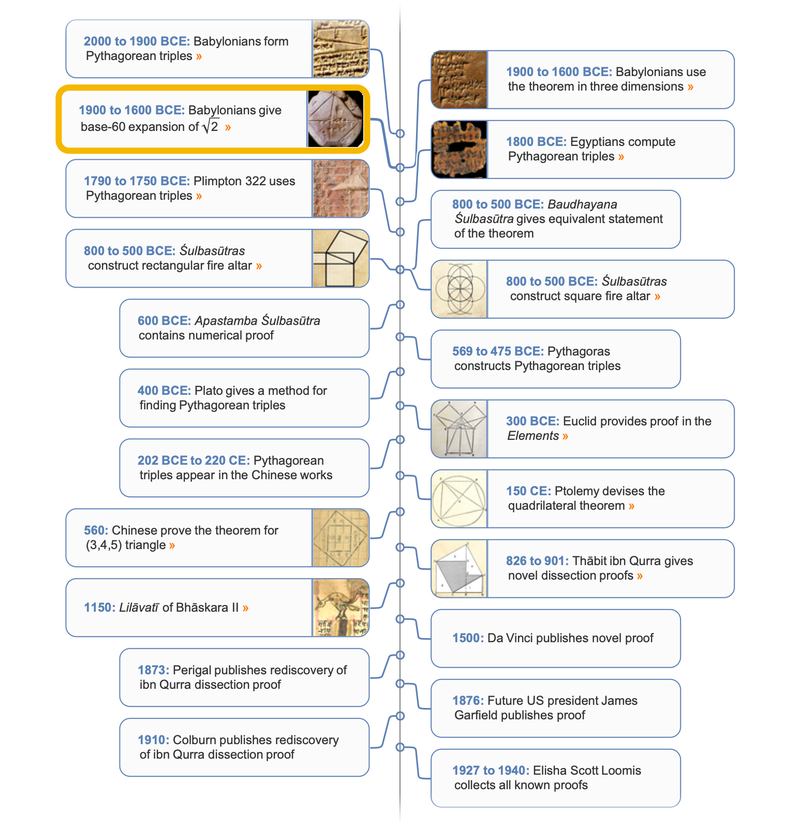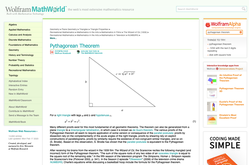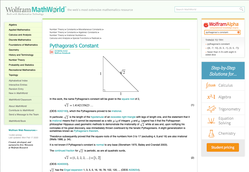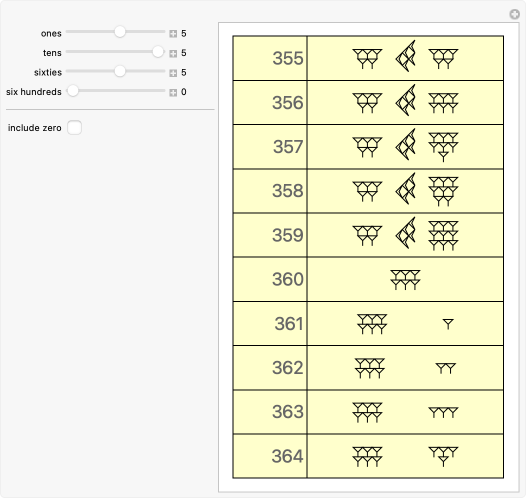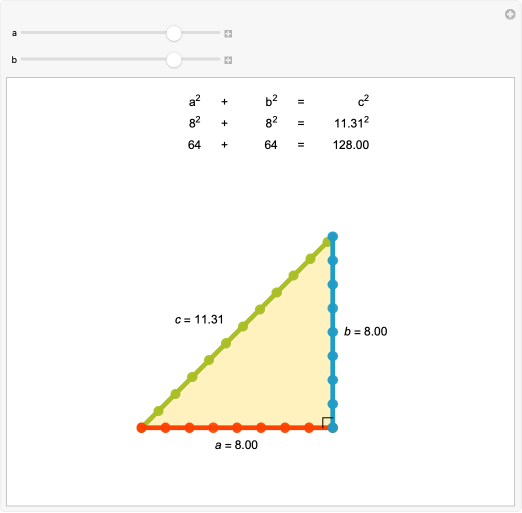around 1900–1600 BCE
Babylonian Square Root of 2 Tablet
Computing the square root of 2 in base 60
Circular tablet YPM BC 021354 contains a drawing of a square and its diagonals together with the sexagesimal representation of the diagonal length written in cuneiform numerals.

This famous tablet is one of few Babylonian tablets that consists entirely of a geometrical diagram (plus numbers). It demonstrates that Babylonian scribes both knew the Pythagorean theorem and were able to accurately calculate square roots. The diagram depicts a square with its diagonals together with an accurate approximation of the square root of 2. In addition, the number 30 is written above the upper-left side and the length of a diagonal corresponding to a square of this edge length is written beneath the horizontal diagonal.
